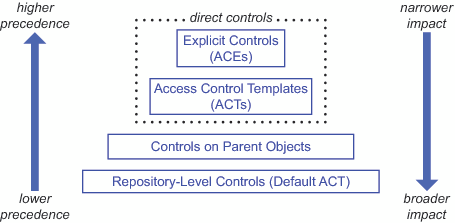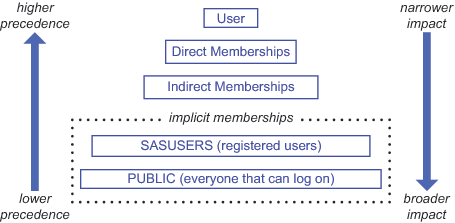Two Relationship Networks
Permission settings are conveyed across two distinct
relationship networks:
-
In the identity relationships network, permissions that you assign to one identity can affect many other identities. For example, if you grant a group access to a report, that grant applies to everyone who is a member of the group. This relationship network is governed by a precedence order that starts with a primary (usually individual) identity, can incorporate multiple levels of nested group memberships, and ends with implicit memberships in SASUSERS and then PUBLIC.

